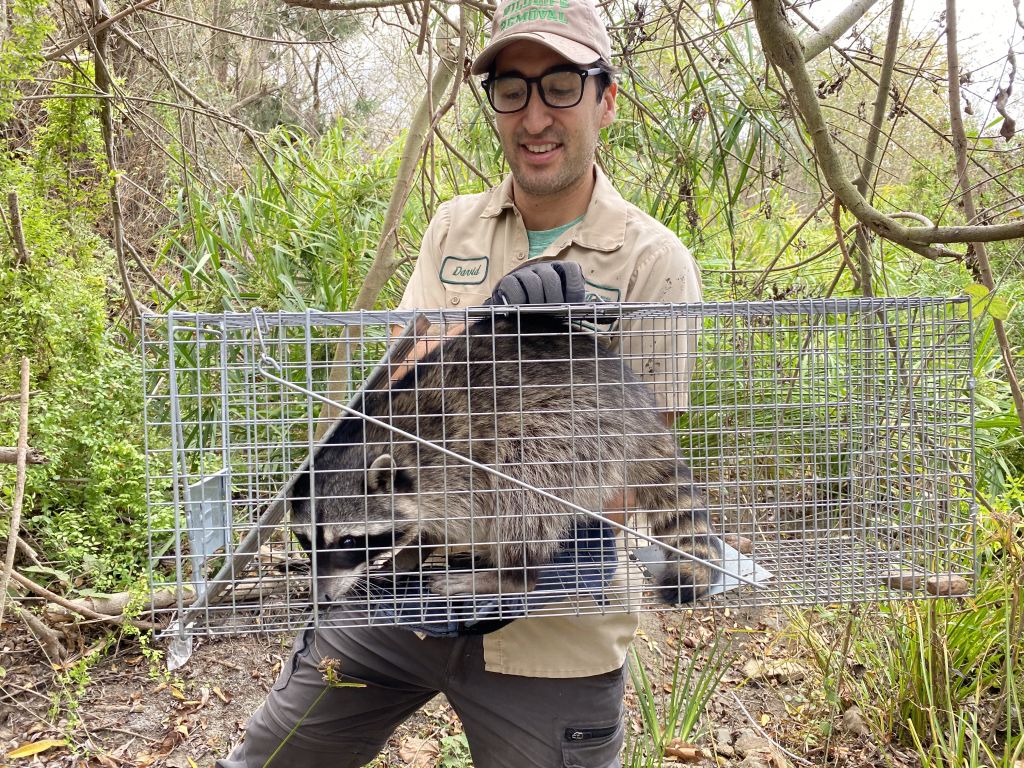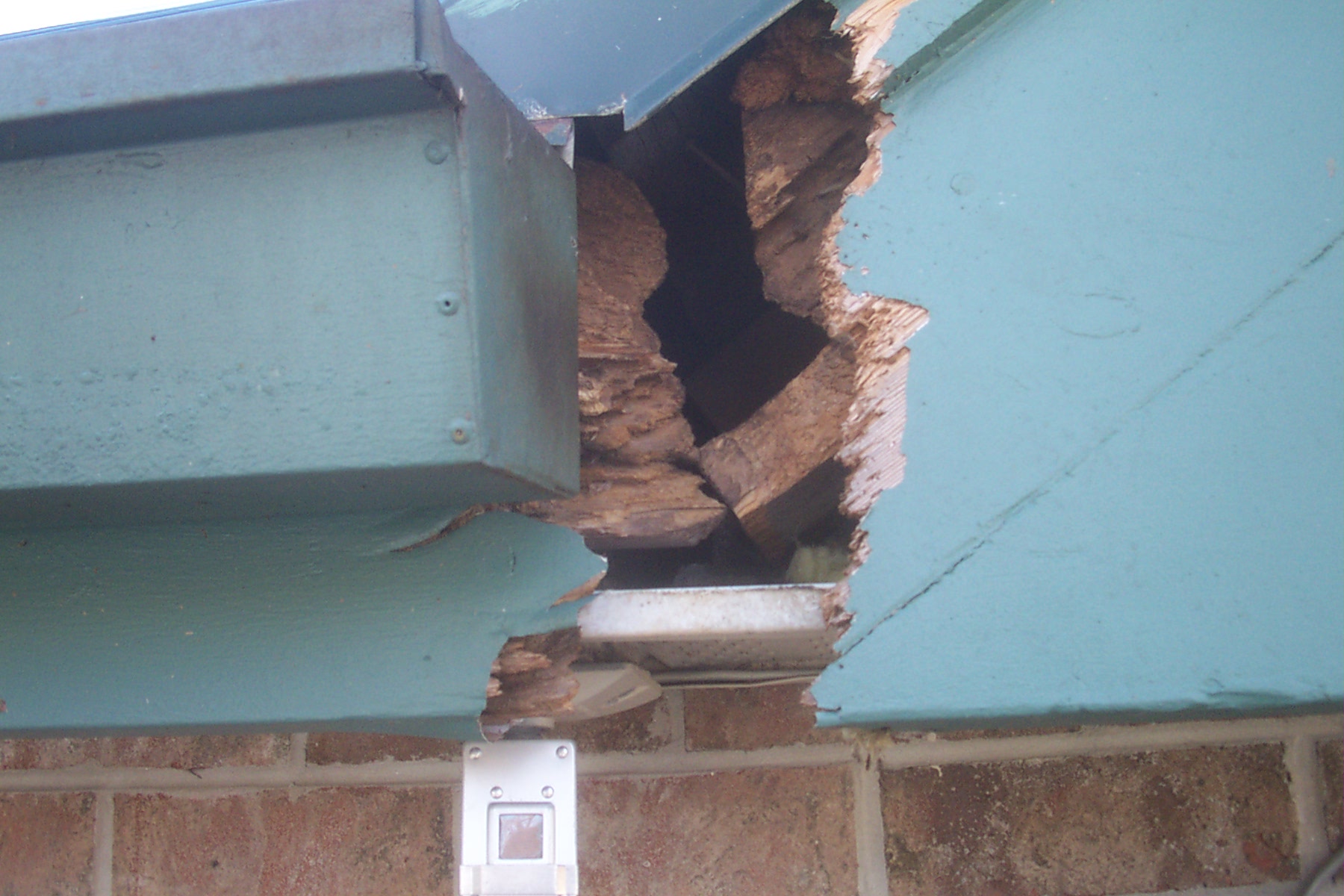exclusion & repair
Finding The Animals and Entry Points
Homeowners hearing scratching and scurrying in their walls, attic, or basement is very often the first time they are made aware that animals have made their home – a home for themselves. This is unfortunate because hearing animals inside and around your house means the damage is already done and the animals are inside.
Before thinking about repairing the damage that has more than likely been done to your home, finding the animal entry points, where the animals are actually located, and removing them from the space are the most important tasks to complete. You may think that you are hearing an animal in the walls when it is actually on the roof, so finding the entry points will make finding and removing the animals more efficient.
When looking for the entry points, it is important to keep in mind the general area where you heard the noise, but it is also important to remember that the invasion may not be limited to only that particular space. Hiring an expert will make it easier to complete a thorough investigation as they are aware of the typical entry points of a variety of wildlife. The home should be thoroughly searched from top to bottom as there could be entry points to multiple areas of the home.
These entry points could have already been present, perhaps a mistake of the home builder, or they could have been created by the animal chewing or tearing their own entry point into the home.
It is important to inspect all areas of the home. The roof, vents, and ground-level should all be explored. Common areas that should be more closely looked at include damaged vents or soffits in the roof, damaged/loose parts of walls, under the patio/deck, chimney openings, and loose or damaged parts of the roof.


Humane Removal
Animals that enter your home do not typically spend their entire day within the home. Your home or building is a warm, dry space for them to sleep, but they will eventually have to leave the space to find food. When looking for the spaces that the animals have inhabited, you or the professional could get lucky and the animal could be currently out of the space. However, that is not always going to be the case and therefore animal removal will have to take place. The removal process varies for different types of animals, so the process your neighbor or family member went through might be different than what is done for the particular wildlife in your home.
With some animals, all entry holes must be sealed before they can be trapped. Holes created by rats should be sealed first and then the rats can be trapped by snap traps. If raccoons make their way to an attic and there are young present, the young should first be removed by hand and then the adults should be trapped and removed. Skunks should be trapped in a cage. Opossums can be found in a variety of spaces around the home and should be trapped in cage traps as well. The process for squirrels can be a little more complicated. It is best to remove squirrels by providing a one-way door for them to exit or by placing a trap on their entry/exit point to the house. Snakes can be removed by hand, but if they are inside the house a trap can be used. Bats have to be removed alive and this can be done with professional doors or traps. Hiring a professional helps ensure that every animal is properly and humanely removed. Missing an animal could cause a homeowner to have to repair entry/exit points multiple times instead of one, thorough time.
Assess and Repair
Once the animals are properly and humanely removed, it is time to assess the damage and see what repairs need to be completed. It is so important to make sure that every entry/exit on the property is properly sealed. Even if a hole was not created by animals, it is important to go ahead and seal those as well, so that they do not become future entry/exit points.
Using high-quality products to repair the damage to your home is vital. Cheaper materials will likely allow wildlife to enter your home again. Higher-quality materials may cost more upfront but will save you time and money in the long run. Low-quality materials may cause a homeowner to have to go through the process of exclusion, repair, sanitation, and prevention multiple times. Small differences can make all the difference when deciding what to use to repair the damage. Spending the money on a thicker mesh to cover a hole may be worth the money as it will be harder for an animal to make its way through the thicker material and enter the home.
The walls of your home are vital to the structural integrity of your residence, so care should be taken when deciding what process to take or what materials to use to repair these areas of your home or building. The size of the hole or damage plays a part in what decision should be made and having a professional come and look at your space would be ideal when looking at these foundational areas of your home.
Sometimes, bricks in a wall may even need to be replaced and you will want those bricks to be properly placed. With larger holes in a wall, it may be necessary to have a professional complete the task, so that the hole is not broken through. Some smaller holes may be sufficiently filled with drywall or another filler, but it is important to take your time and decide what the best fit is for the specific situation and what will truly last.
When repairing parts of the basement, it may be necessary to check outside for burrows to see what parts of the area have been entered. Large animals, like raccoons, can enter your basement and cause massive amounts of damage. They can destroy insulation, tangle and chew up important wiring for your home. They can also cause liquid damage by using the floor of your basement to relieve themselves. Repairs are not only limited to walls, roofs, or other structural areas of your home. Wildlife can find its way to obscure parts of your space and destroy features that are necessary to the function of your home or building. Even if there are only minuscule cracks in and around your home, animals like raccoons will take absolute advantage and force entry inside. Once inside, raccoons can find a way to enter many surprising spaces, so it is necessary to properly and thoroughly repair these areas.
Many times, the holes or damage in an attic or roof will be smaller holes as smaller animals are the ones that typically frequent those areas of a home or building. In this part of the home or building, you can typically follow normal repair processes, but it is important to make sure any space or entry point is properly completed. You may need to reach obscure or small places to repair every part of the damage, so a ladder and safety precautions could be necessary.
These areas can also be vital to the structural integrity of your home. If damaged vents were used for the entry/exit points, it is important to purchase new, sturdy, and metal vents that will last over time and be adequate protection from wildlife entering in the future. Adding a sturdy and thick mesh covering is also useful. You may find a larger hole from a bigger animal occasionally and those damaged areas should be more carefully looked at and professionally taken care of. Not using the right process or materials for large areas of damage could be detrimental to the structure of your home or building’s roof.
If damage to the chimney is what needs to be fixed, repairing or installing a chimney cap is usually necessary and helpful to keep future visitors out of that area. You may also need to repair the structural part of the chimney. All of this is for naught if there are holes or spaces between parts of the structure. Filling in all the nooks and crannies is necessary to not have to repeat the process again later.


Do it Well
When it comes to home repairs after wildlife damage and removal, skimping out on quality for money is not usually the most lucrative way to go. Avoiding professional help or high-quality materials can lead to multiple animal and wildlife invasions, causing you to spend more money in the end. It is also important to remove the animals as humanely as possible and professionals are aware of the latest methods and materials that can be used to do this. There are always animals ready to take the place of the animals that were previously in your home, so unless a new group of visitors is something you are interested in, exclusion and repair need to be done as thoroughly as possible.